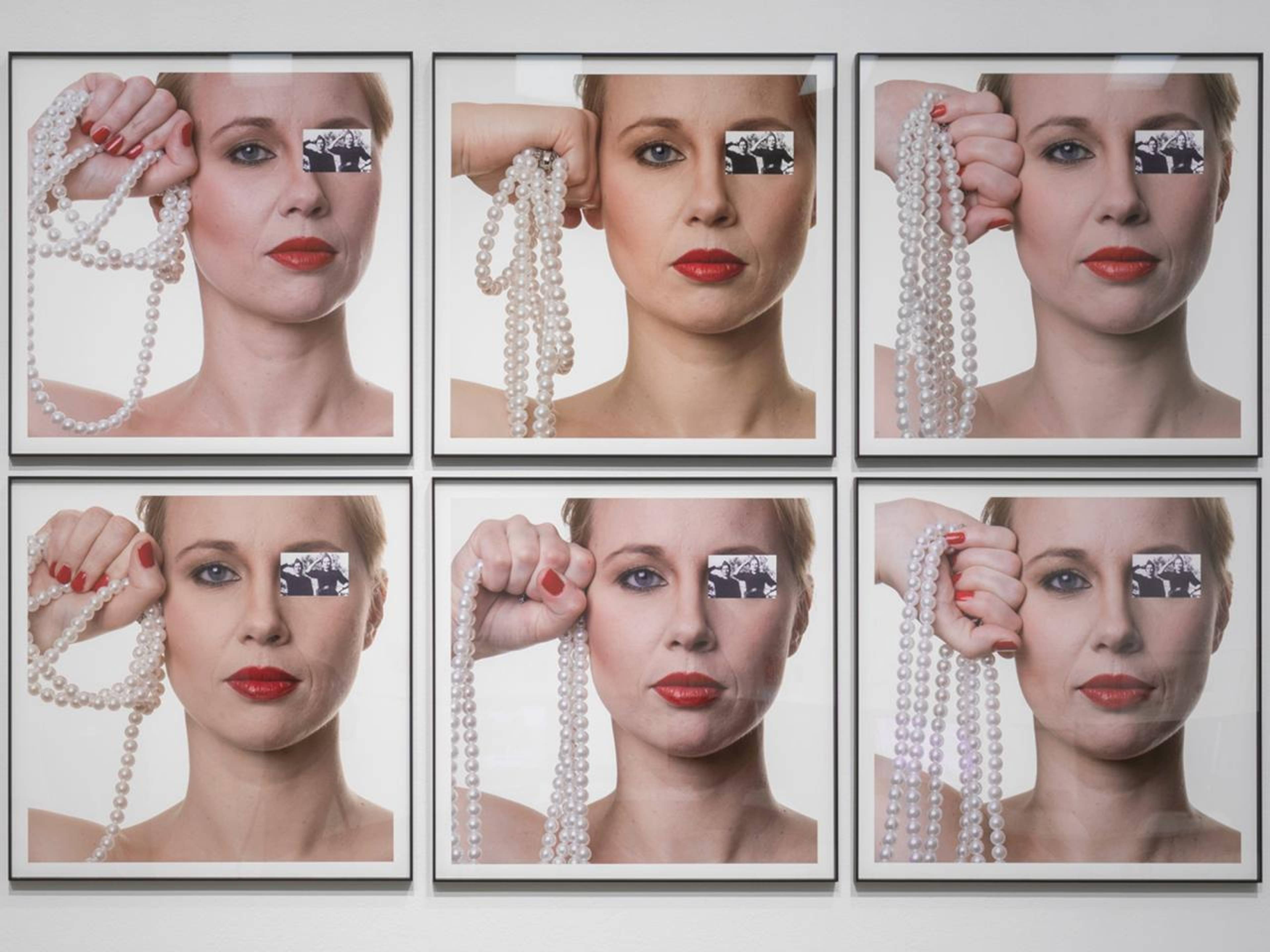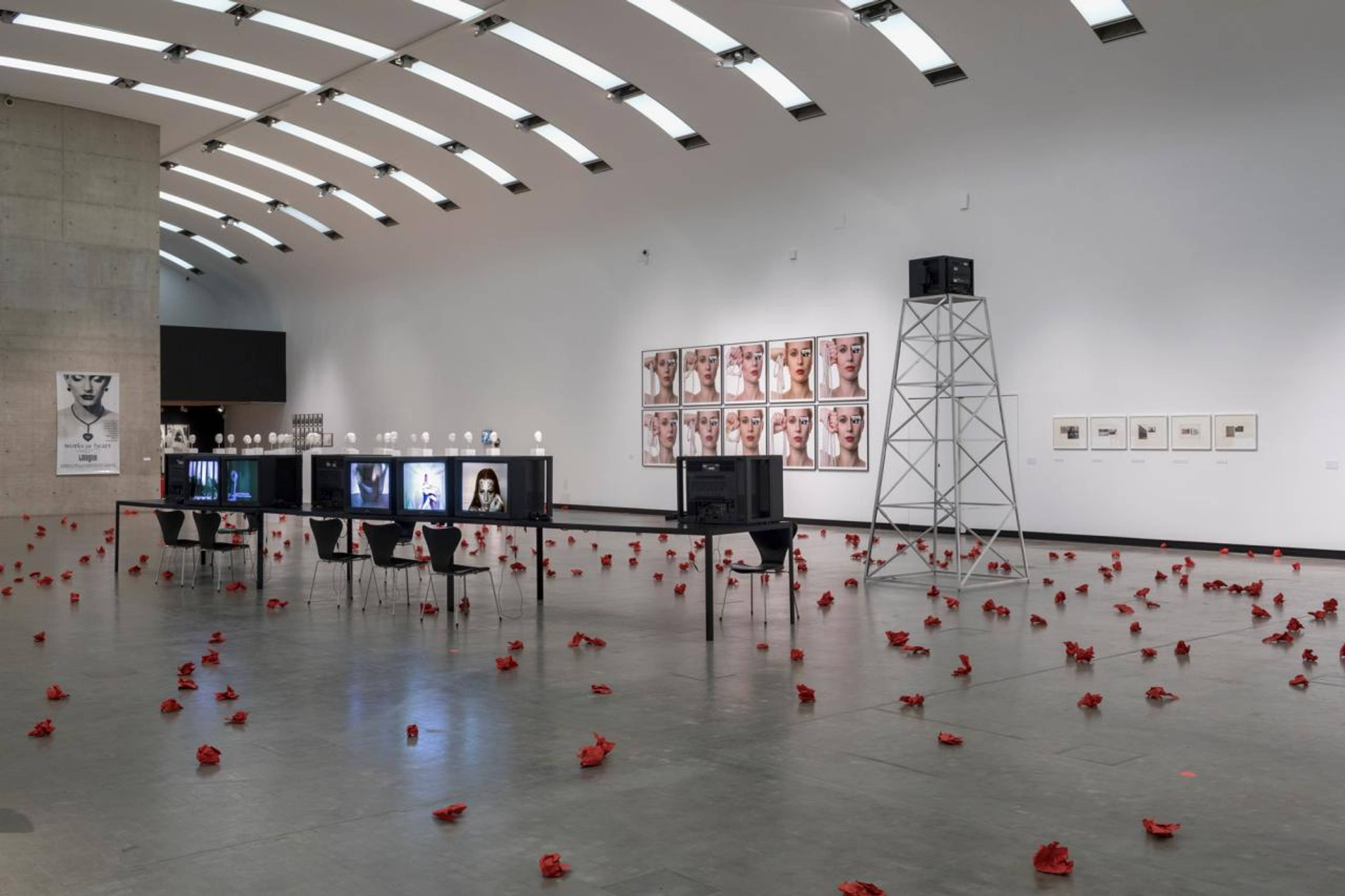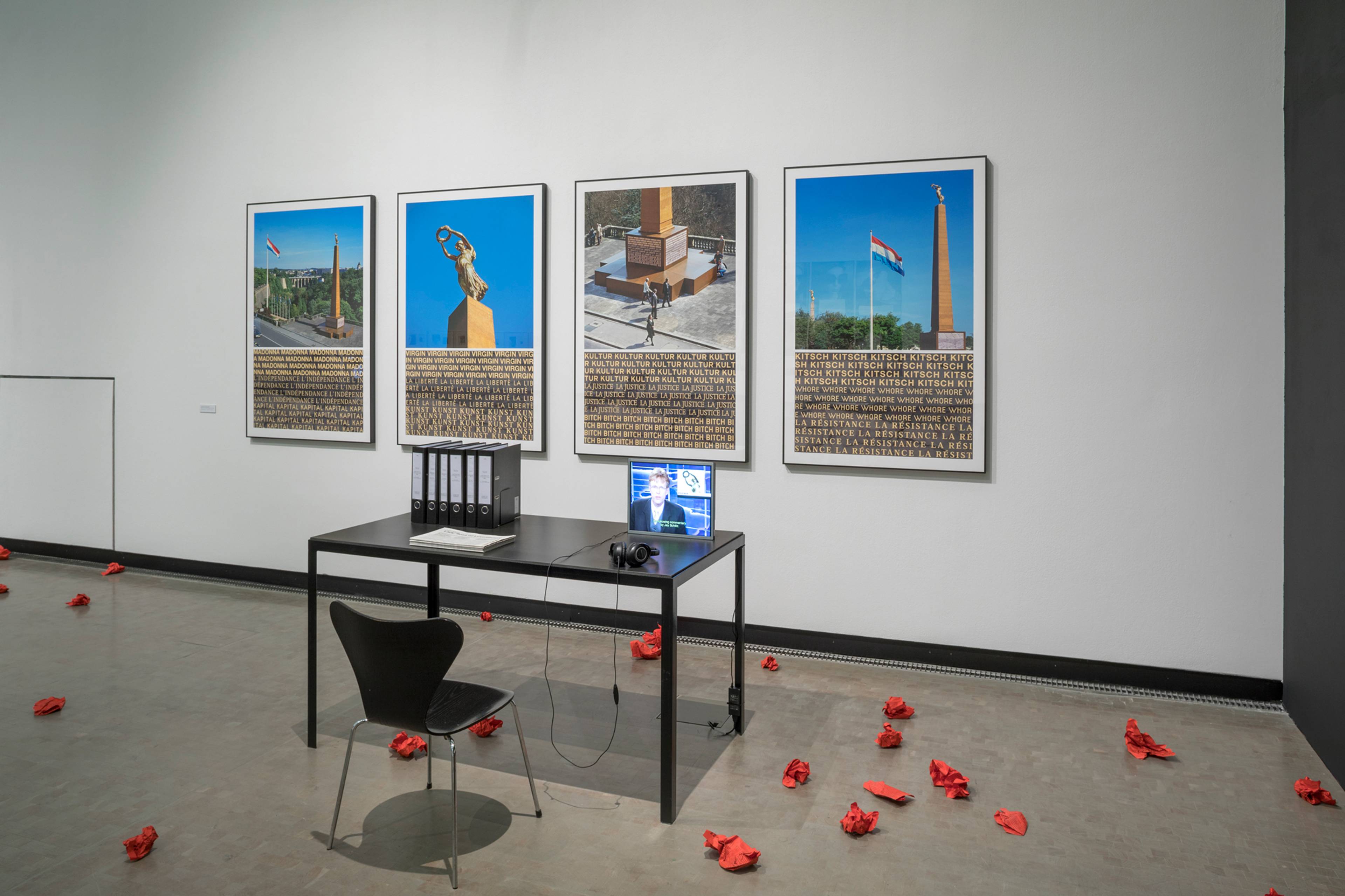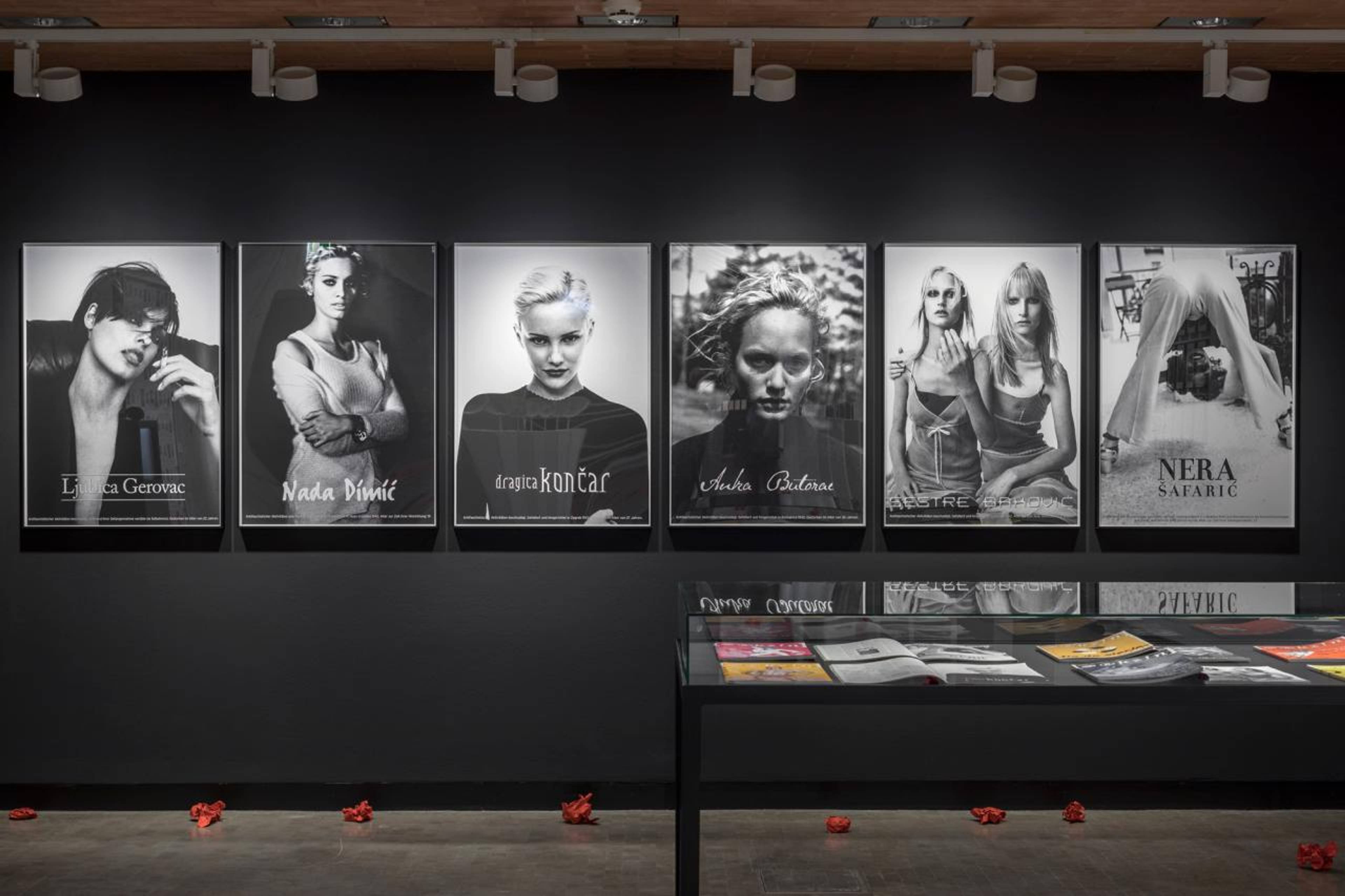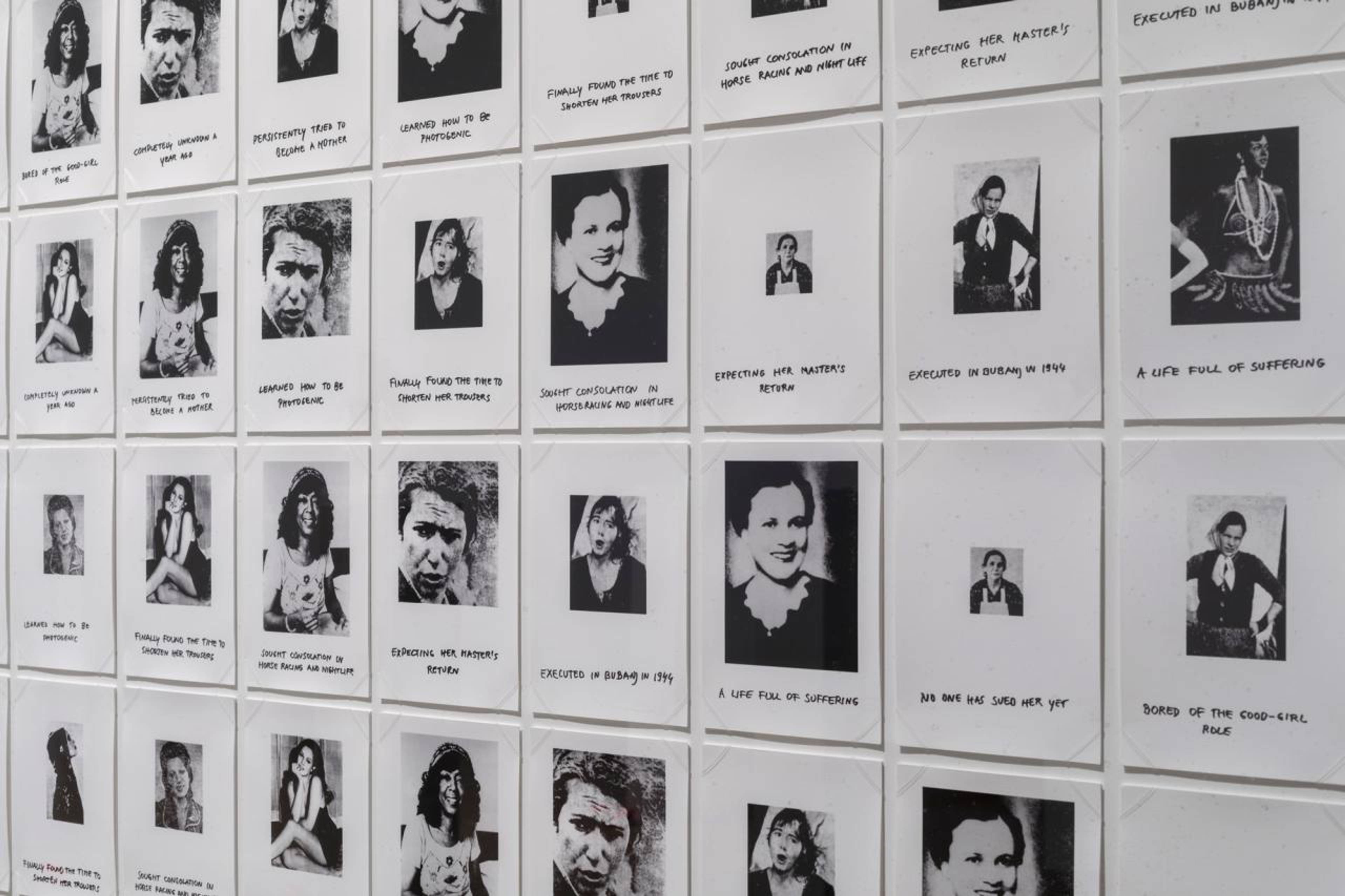Q: Why did the feminist cross the road?
A: To find an ATM machine.
I’m late for my interview and can’t pay for my coffee. The Euro arrived yesterday and frenzied the country. The bartender rolls his eyes and points in the direction of a cash machine. A crowd of Croatians huddle around as if it spits free money. By the time it’s my turn it prints wasted potential. Blank receipts. I check the time – kurac! – and run to the next machine. “Also empty,” a lady informs me, with a shrug. I wonder who she owes for an espresso.
Whose idea was this? Croatian Kuna are iconic. Coins with bears, weasels and birds. End of an era. I picture the bartender waiting for me to bring him the Euro. Fists clenched in his pockets. Since when does coffee cost a whole Euro in Zagreb ? Doing the right thing is futile. The third ATM is empty and I make it to my appointment as a thief.
View of “Works of Heart (1974–2022),” Kunsthalle Wien, 2022
Sanja Iveković’s (*1949) studio sits above the flat she’s lived and worked in for decades. Savska 1. It’s where her Trokut (Triangle) performance took place in 1979. You know, when Yugoslavian president Josip Broz Tito’s motorcade passed by, and Sanja sat on her balcony, reading a book, sipping whiskey and simulating masturbation until a cop made her stop. Everyone was ordered to stay inside during Tito’s passing, so who knows how many people were masturbating in that moment. She made it the moment. Turned banality into a statement.
Suffering is banal to those who know it. Iveković, the infamously irreverent artist from ex-Yugoslavia, deals with grave topics like sexism, war, and consumerism, but – as seen in Trokut – there’s always a touch of Balkan humor.
At the studio I’m greeted by Ana, who works for Sanja. She says the studio is in the process of being turned into a spot for lectures, screenings, exhibitions, and an archive anyone can access. Sanja’s work is splattered on walls, piled on the floor and organized in boxes and shelves. The kitchen has a great view of Zagreb and the bathroom is nice (even stolen espressos aren’t free of consequences).
View of “Works of Heart (1974–2022),” Kunsthalle Wien, 2022
My tardiness is inconsequential. Ana informs me that Sanja can’t make it. She won’t be able to do Q&A via email, either. This is very Croatian of her. I can’t explain why, but ako znaš, znaš (if you know, you know). Meanwhile, faced with the option of a trip to Vienna or Zagreb, I chose the latter. Making the wrong choice was very Croatian of me . So what do we do now? Balkans can make the most of most things. With greasy burek fingers I flip through the archives and imagine myself at the Kunsthalle …
“Works of Heart” at Kunsthalle Wien is a retrospective of Sanja’s art spanning from 1974 to 2022. The exhibition is named after her work from 2001, a page from The New York Times juxtaposing an ad for a heart-shaped pendant necklace with an image of the 1994 Sarajevo massacre. The retrospective features her most iconic videos, performances, photography, installations, and a poetry book and performance dedicated to her mother.
The art book Weh dem, der sich vor Geistern fürchtet / Jao si ga onome tko se boji duhova (Woe unto Them Who Are Afraid of Ghosts) was made for the exhibition and contains poems by Sanja’s mother, Nera Šafarić. Mother and daughter dynamics were dissected in Majka i kći (Kokoš i jaje) (Mother and Daughter [Chicken and Egg]; 2022) co-created with Slovenian dance artist Mitja Obed, performed the day after the opening at Kunsthalle. Speaking of mommy issues, word on the Savska street is Sanja originally bought the studio to be an apartment for her own daughter to live in. Living above your mother is one thing, but a performance artist who masturbates on their balcony?
View of “Works of Heart (1974–2022),” Kunsthalle Wien, 2022
I want to ask Sanja many things, like, Is being mean to your husband feminist performance art? What does she think of girls “reclaiming” their image on social media? Young women getting filler? So much of Sanja’s work is about subverting the media and marketing. How can we do that now that we’re becoming our own ads? I ask Ana some of my questions, as if she can answer as Sanja’s surrogate. She says when she shows Sanja something on Instagram, Sanja goes, “What is this?”
I’m dying to know more about Yugoslavia. My grandmothers could get abortions easy as pie but today the church has the power. Men protest in the streets about “regaining control of the family.” Were women more “free” in some way, under communism? From America to Afghanistan things got grim for women. Sanja’s earliest art is jarringly relevant today. If things keep getting worse, is activist art pointless? Is the point of the art to show that it is pointless?
Before leaving, I snap illicit pictures of Sanja’s unreleased work. Printed emails dishing arguments and lawsuits are taped to her walls. Some of the emails feature banner ads for “how to lose ten pounds in a week.” So appropriate. “That’s so funny, how she’s using the lawsuit about the artwork as part of the artwork,” I remark. “Yeah,” Ana smiles, “she’s petty like that.” Sanja has said “the personal is political.” Take everything personally!
View of “Works of Heart (1974–2022),” Kunsthalle Wien, 2022
If you can’t make it to Vienna, there will be a new iteration of the “Works of Heart” exhibition in the Museum of Contemporary Art in Zagreb on June 15. With unexhibited works and a segment dedicated to Sanja Iveković’s 70s archive curated by Ivana Bago with Zbyněk Baladrán. (The food and booze is better in Croatia anyway and now you can buy it in Euros).
Outside I consider the bartender. Perhaps I’m one of many who left him high and dry that day. I consider waiting in line for another ATM. I consider Sanja’s Waiting for the Revolution (Alice) (1982). A girl patiently stares at a frog forever. He never turns into a prince. He only changes color.
View of “Works of Heart (1974–2022),” Kunsthalle Wien, 2022
___
“Works of Heart (1974–2022)”
Kunsthalle Wien
4 Oct 2022 – 12 Mar 2023


